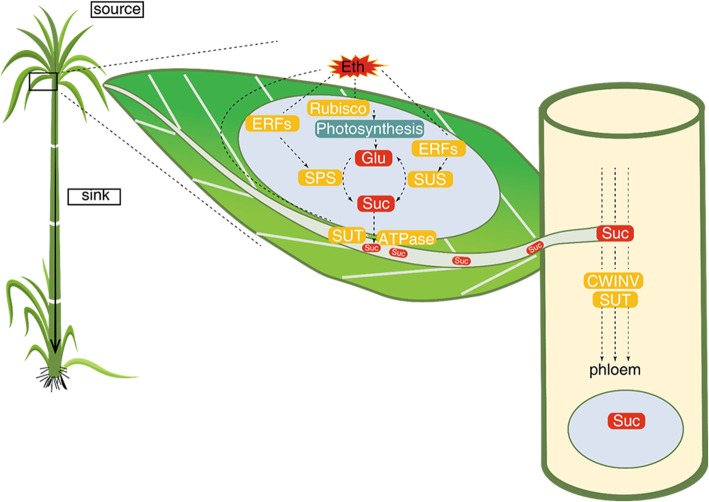Fig. 7.
Schematic presentation of ethylene-regulated sugar production and translocation in sugarcane. The identified ethylene-regulated are integrated into a functional network of sugar production (source), sugar transportation and sugar aaccumulation (to sink). When leaves were treated with ethylene (Eth), Rubisco activity was enhanced; sucrose synthase (SUS), invertases (INV) and sucrose phosphate synthase (SPS) were up-regulated by translational regulation by ERFs, stimulating sucrose biosynthesis. At this time, sucrose and glucose could be acting as regulatory signals to control photosynthesis. After synthesis, sucrose will be transported from leaf to phloem through plasmodesmata (by sugar transporter, SUT - the symplastic route) and cell wall (by cell wall invertase- the apoplastic route). Then, sucrose was unloaded at the sink mainly through SUT. Sugar translocation from the leaves to phloem creates a sucrose gradient that facilitates the biochemical balance of sugar synthesis at the source

